Arusha National Park, while one of Tanzania’s smaller parks, stands out for its incredible diversity and beauty. Located just a stone’s throw from Arusha town, it offers an easily accessible gateway to Tanzania’s natural wonders. Despite its compact size, the park encompasses a wide range of ecosystems, from lush rainforests and open savannas to volcanic craters and tranquil lakes. This makes it a perfect destination for visitors looking to experience the rich biodiversity of East Africa without the long travel distances required to reach larger, more remote parks. In this guide, we will delve into the unique aspects of Arusha National Park, including its history, geography, wildlife, and the various activities it offers to ensure an unforgettable visit.
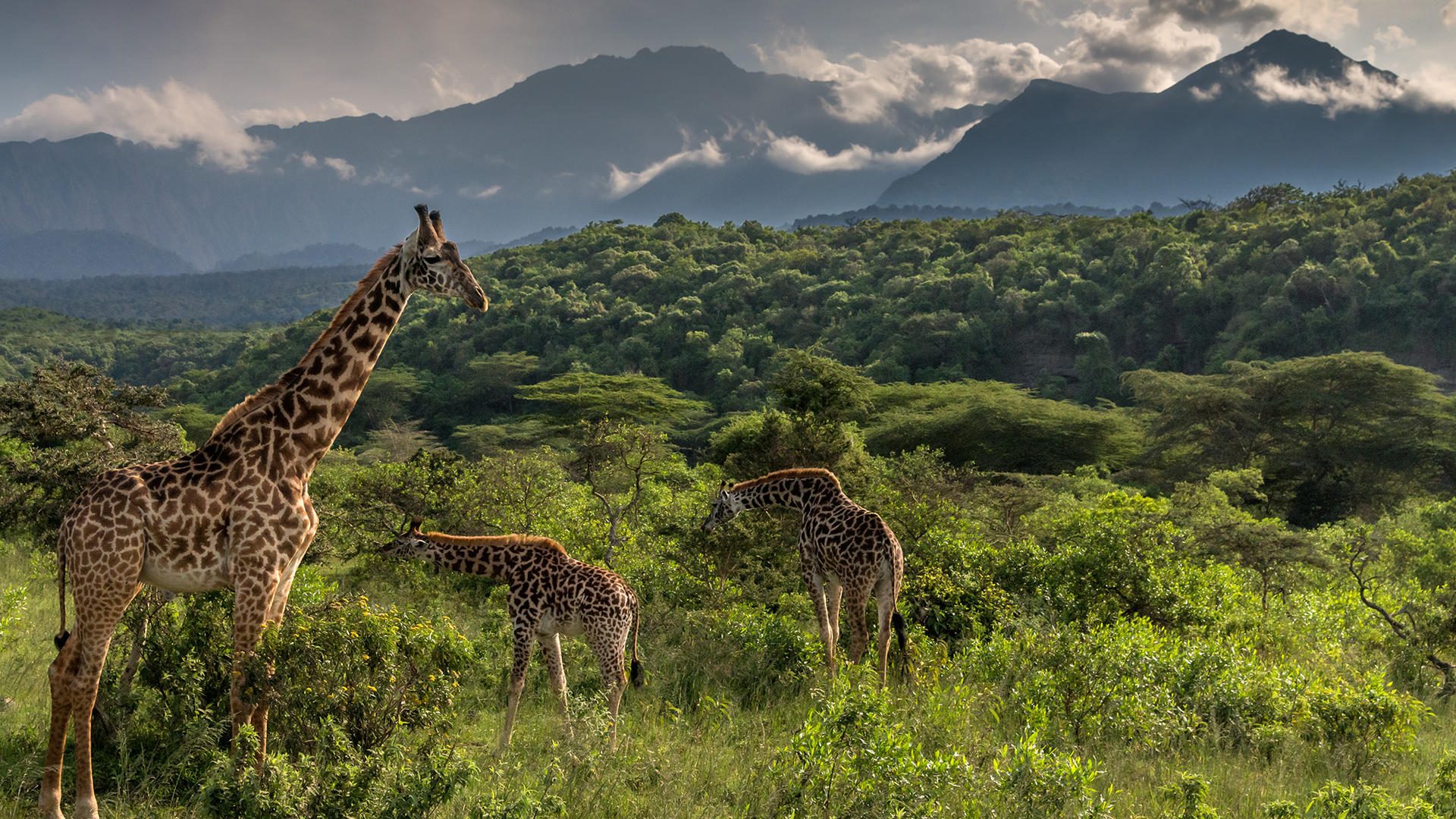
Tourism Activities Available in Arusha National Park
Arusha National Park offers a diverse range of activities that cater to various interests, making it an ideal destination for all types of travelers. Whether you are an adventure enthusiast, a nature lover, or simply looking to relax and take in the beauty of Tanzania, this park has something for everyone.
1. Game Drives
Game drives are one of the most popular activities in Arusha National Park. Visitors can explore the park’s diverse landscapes, from open savannas and dense forests to the stunning Ngurdoto Crater and Momella Lakes. During these drives, you can expect to see a wide variety of wildlife, including giraffes, zebras, buffaloes, and various species of antelopes. The park is also home to primates such as the black-and-white colobus monkey and blue monkeys. While predators like lions are rare, leopards can sometimes be spotted, making every game drive an exciting adventure.
2. Canoeing
Canoeing on the Momella Lakes offers a unique perspective of the park’s wildlife and scenery. This serene activity allows visitors to glide across the calm waters, surrounded by lush vegetation and the stunning backdrop of Mount Meru. Canoeing is an excellent way to observe the park’s birdlife up close, particularly the flamingos that flock to the lakes. You may also spot hippos and other animals coming to the water’s edge to drink. This peaceful experience provides a different angle of the park’s natural beauty, perfect for photography and quiet reflection.
3. Walking Safaris
Walking safaris are a thrilling way to explore Arusha National Park on foot, offering an intimate experience with nature. Accompanied by an armed ranger, visitors can venture into areas not accessible by vehicle, such as the lush forests and open grasslands. These guided walks provide an opportunity to learn about the park’s flora and fauna, track animals, and experience the sights and sounds of the wilderness up close. Walking safaris are ideal for those looking to engage more deeply with the environment and enjoy the park’s biodiversity at a slower pace.
4. Climbing Mount Meru
For adventure seekers, climbing Mount Meru is a must-do activity in Arusha National Park. As Tanzania’s second-highest peak, Mount Meru offers a challenging yet rewarding trekking experience. The climb typically takes 3-4 days, passing through several distinct ecological zones, from montane forests to alpine meadows. Along the way, climbers are treated to stunning views of the park, diverse wildlife, and the surrounding landscape, including the nearby Mount Kilimanjaro. Reaching the summit of Mount Meru is a triumph that offers panoramic views and a profound sense of accomplishment.
5. Birdwatching
Arusha National Park is a birdwatcher’s paradise, with over 400 species recorded. The park’s varied habitats, from the Momella Lakes to the montane forests, support a rich diversity of birdlife. Some of the species you can spot include flamingos, crowned eagles, turacos, and various types of waterfowl. Whether you are an avid birder or a casual observer, the park offers numerous opportunities to see and photograph these beautiful creatures in their natural environment.
6. Picnicking
For those looking to relax and enjoy the scenery, picnicking in Arusha National Park is a delightful option. The park has designated picnic sites, many of which offer stunning views of Mount Meru, the Momella Lakes, or the surrounding landscapes. Visitors can enjoy a meal amidst nature, with the sights and sounds of the park’s wildlife providing a serene backdrop. Picnicking is an ideal way to take a break during a day of exploring the park, offering a moment of tranquility in the midst of nature.
7. Cultural Tours
While Arusha National Park is primarily known for its natural attractions, cultural tours in the surrounding areas offer an additional dimension to your visit. You can visit nearby villages to learn about the traditional ways of life of the local Maasai and Meru communities. These tours often include visits to local markets, schools, and homes.
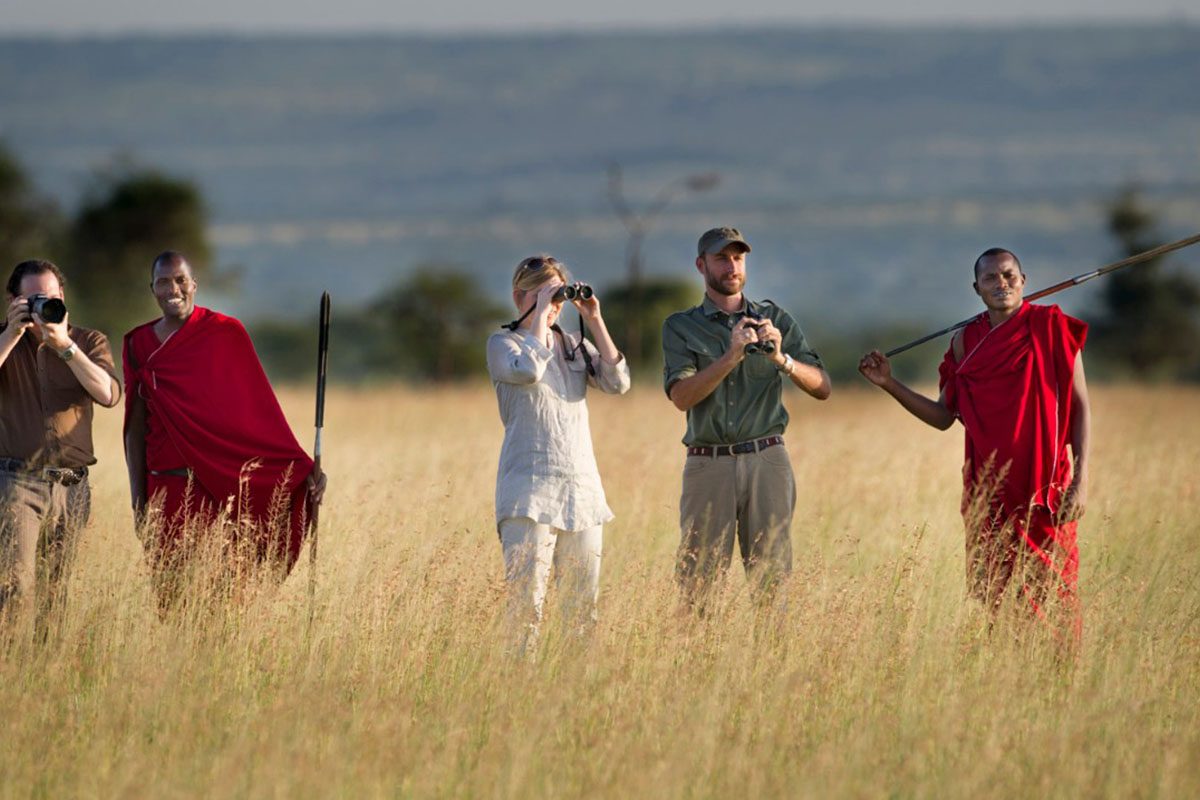
2. Background of Arusha National Park
Arusha National Park was officially established in 1960, though its history stretches back further. Initially, the park covered only the Momella area and the Ngurdoto Crater, both of which are key attractions today. Later, the park was expanded to include Mount Meru, Tanzania’s second-highest peak. The inclusion of Mount Meru added significant ecological and geological diversity to the park, making it a key site for both conservation and tourism. Historically, this area was part of the private lands of the Momella family, who were instrumental in its early conservation efforts. Over time, the Tanzanian government recognized the area’s importance for wildlife preservation and eco-tourism, leading to its designation as a national park. Today, Arusha National Park plays a vital role in Tanzania’s network of protected areas, contributing to the conservation of critical habitats and species.
3. Geography and Landscape
Arusha National Park is located in northern Tanzania, just 25 kilometers northeast of Arusha town, making it one of the most accessible parks in the country. Covering an area of 552 square kilometers, the park is small by African standards, yet its landscape is remarkably varied. The park’s centerpiece is Mount Meru, a dormant stratovolcano that rises to 4,566 meters, providing not only a stunning backdrop but also a challenging trek for adventurous climbers. The park’s other notable features include the Momella Lakes, a series of shallow alkaline lakes that attract a variety of bird species, particularly flamingos, and the Ngurdoto Crater, a volcanic caldera often referred to as “Little Ngorongoro.” This crater is filled with dense vegetation and serves as a haven for wildlife such as buffaloes and warthogs. The diverse geography of Arusha National Park offers visitors a microcosm of Tanzania’s broader natural beauty, with the added advantage of being compact enough to explore in a single visit.
4. Biodiversity and Wildlife
Arusha National Park boasts a rich biodiversity, with its various ecosystems supporting a wide range of plant and animal species. The park’s flora includes everything from dense montane forests on the lower slopes of Mount Meru to open grasslands in the Ngurdoto Crater and marshlands around the Momella Lakes. These habitats are home to an array of wildlife, including giraffes, zebras, buffaloes, and various species of primates, notably the black-and-white colobus monkey, which is often seen leaping between the trees. While large predators like lions are rare, the park is known for its leopards, which can occasionally be spotted in the forested areas. Additionally, the park is a paradise for birdwatchers, with over 400 species recorded, including the colorful turaco and the elusive Narina trogon. The unique ecosystems within Arusha National Park not only provide refuge for these species but also offer visitors the opportunity to experience a wide range of wildlife in a relatively short amount of time.
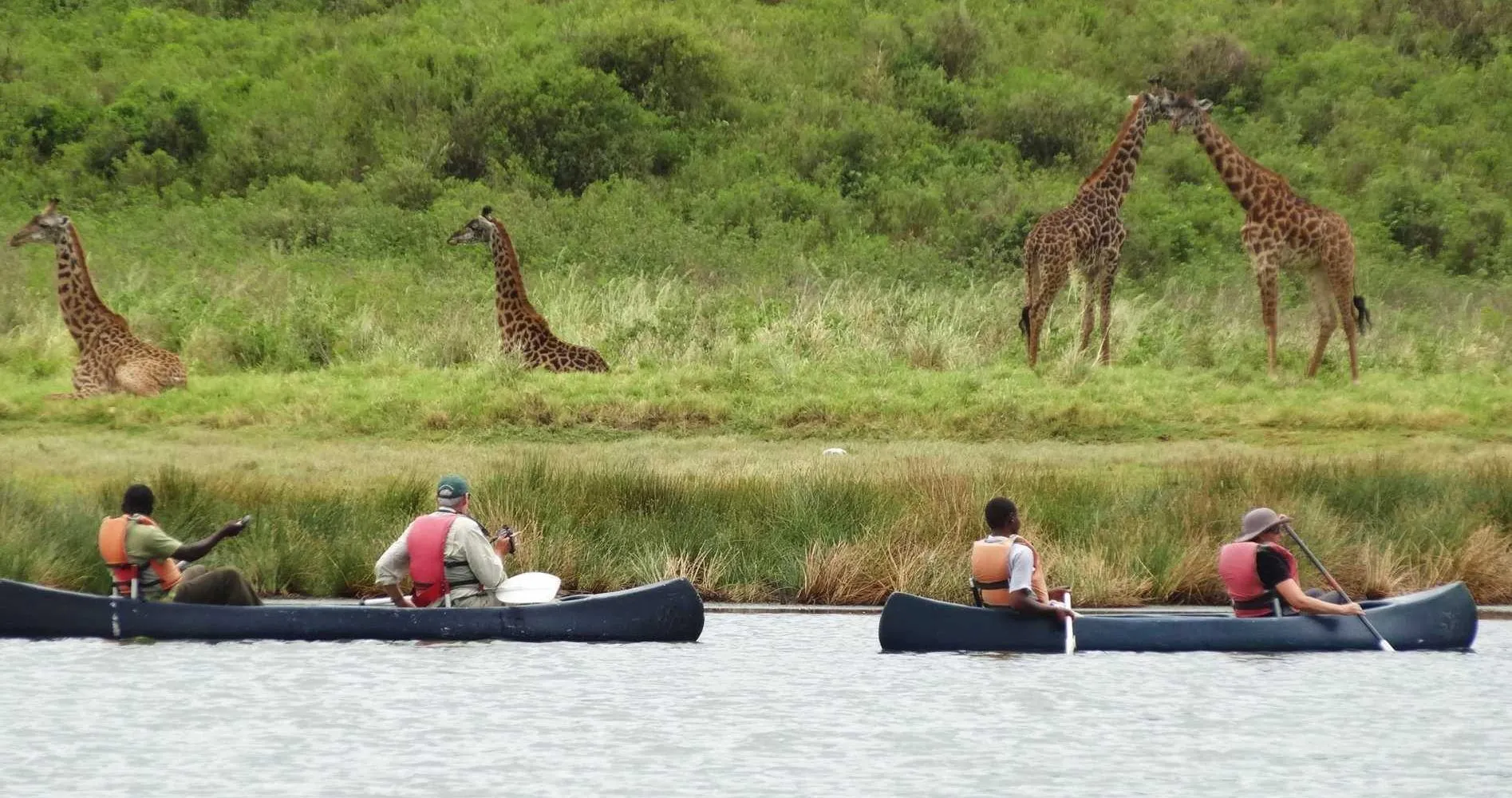
5. Tourist Attractions and Activities
Arusha National Park offers a variety of activities that cater to different interests and levels of adventure. Game drives are one of the most popular ways to explore the park, allowing visitors to traverse its diverse landscapes and observe wildlife in their natural habitats. Unlike some of the larger parks in Tanzania, Arusha National Park offers a more intimate and less crowded wildlife viewing experience. For those interested in water-based activities, canoeing on the Momella Lakes provides a unique perspective of the park’s scenery and wildlife, particularly the abundant birdlife and hippos that inhabit the lakes. Mount Meru climbing is another major attraction, offering a challenging yet rewarding trek that takes climbers through several distinct ecological zones before reaching the summit, where they are rewarded with breathtaking views of Mount Kilimanjaro and the surrounding landscape. Walking safaris are also permitted in certain areas of the park, providing a closer and more immersive experience with the environment and its inhabitants. Whether you are seeking adventure or relaxation, Arusha National Park offers a range of activities that highlight its natural beauty and biodiversity.
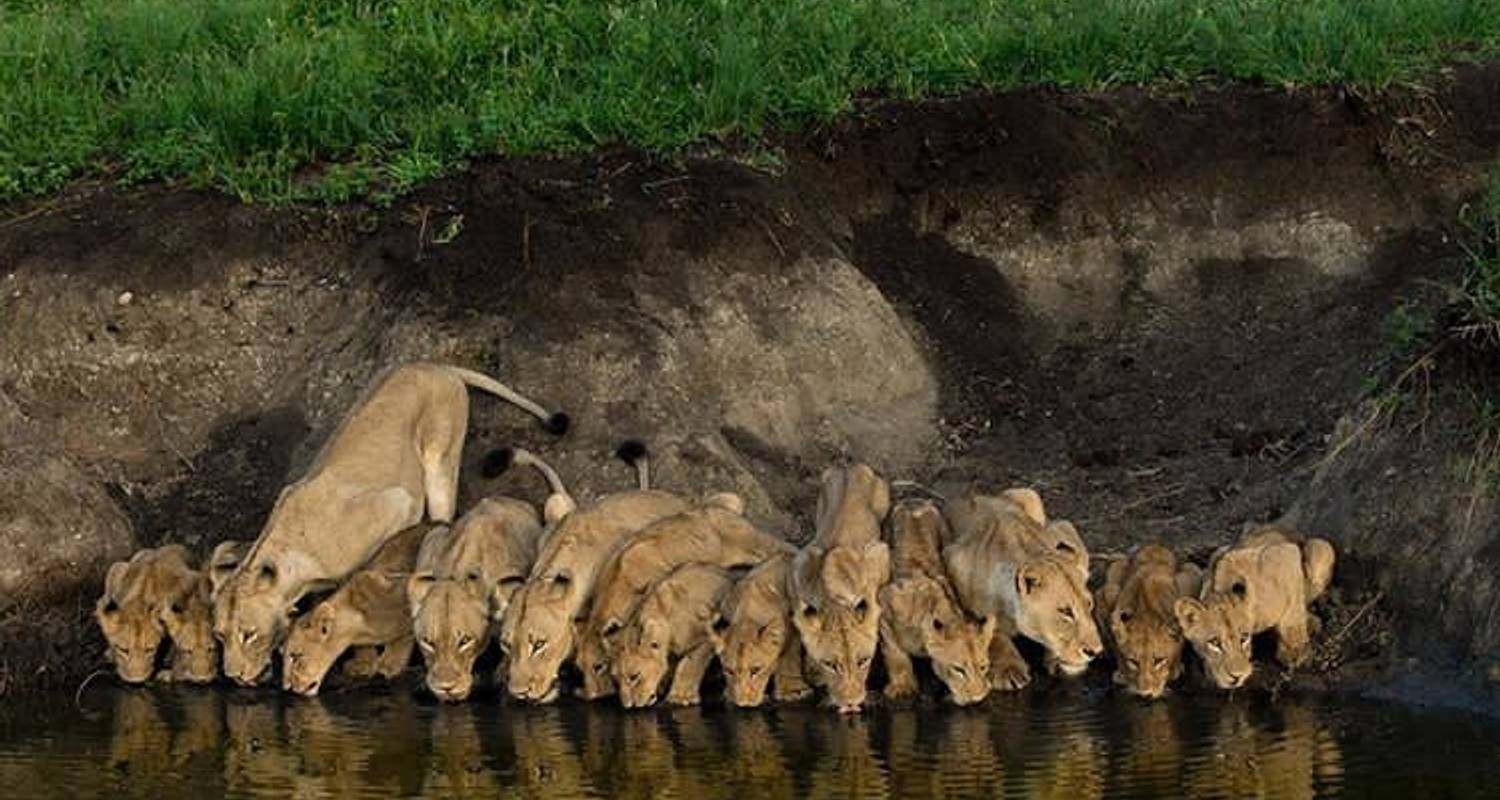
6. Conservation Efforts and Challenges
Conservation is at the heart of Arusha National Park’s mission, and the park is managed by Tanzania National Parks (TANAPA) as part of the country’s broader strategy to preserve its natural heritage. Various conservation initiatives are in place to protect the park’s ecosystems and wildlife, including anti-poaching measures, habitat restoration projects, and community engagement programs. Despite these efforts, the park faces several challenges, such as habitat encroachment from surrounding communities, human-wildlife conflict, and the impacts of climate change, particularly the loss of forest cover on Mount Meru, which is vital for maintaining the park’s ecological balance.
7. Accessibility and Accommodation
Arusha National Park is one of the most accessible parks in Tanzania, located just a short drive from Arusha town and within easy reach of Kilimanjaro International Airport. This proximity makes it an ideal destination for both day trips and extended visits. Several tour operators offer guided tours that include transportation to and from the park, as well as experienced guides who can enhance the visitor experience by providing insights into the park’s natural and cultural history. When it comes to accommodation, visitors have a range of options to choose from, including luxury lodges, tented camps, and budget-friendly guesthouses located in and around Arusha town. Some lodges are situated within or near the park, offering stunning views of Mount Meru and the surrounding landscape, as well as easy access to the park’s main attractions. Whether you are looking for a luxurious stay or a more rustic experience, Arusha National Park offers accommodation options to suit all preferences and budgets.
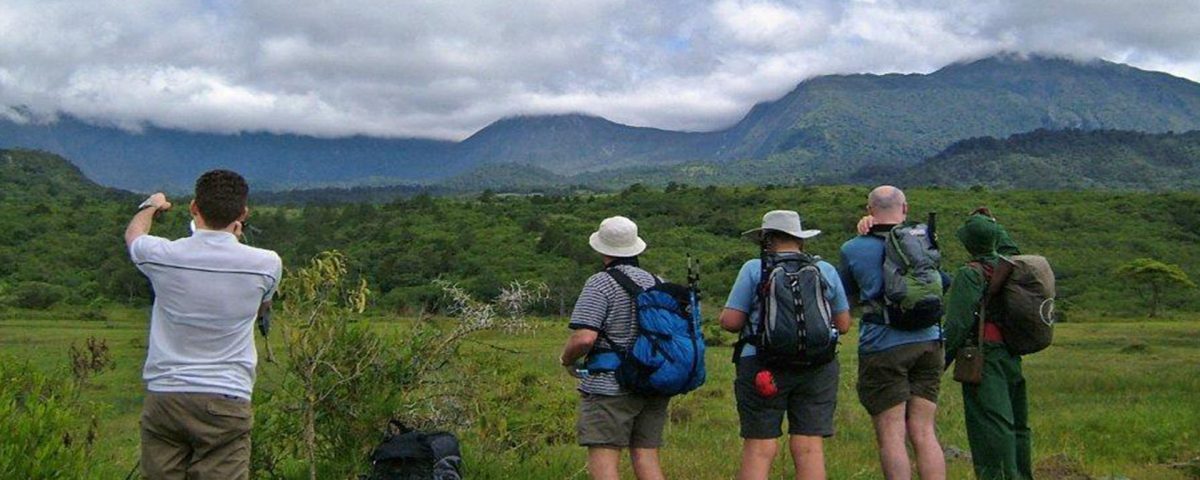
8. Best Time to Visit Arusha National Park
The best time to visit Arusha National Park depends on the activities you plan to do and the type of wildlife you hope to see. The park’s climate is generally mild and temperate, with two distinct rainy seasons – the long rains from March to May and the short rains in November. The dry season, which runs from June to October, is considered the best time for wildlife viewing, as animals are more easily spotted around water sources and the vegetation is less dense. This is also the peak season for climbing Mount Meru, as the clear skies provide spectacular views of Mount Kilimanjaro and the surrounding area. However, the park is beautiful year-round, and the rainy seasons bring their own advantages, such as lush green landscapes, blooming wildflowers, and the arrival of migratory birds. For those interested in birdwatching, the wet season is ideal, as many species are breeding and are more active. No matter when you visit, Arusha National Park offers a rich and rewarding experience.
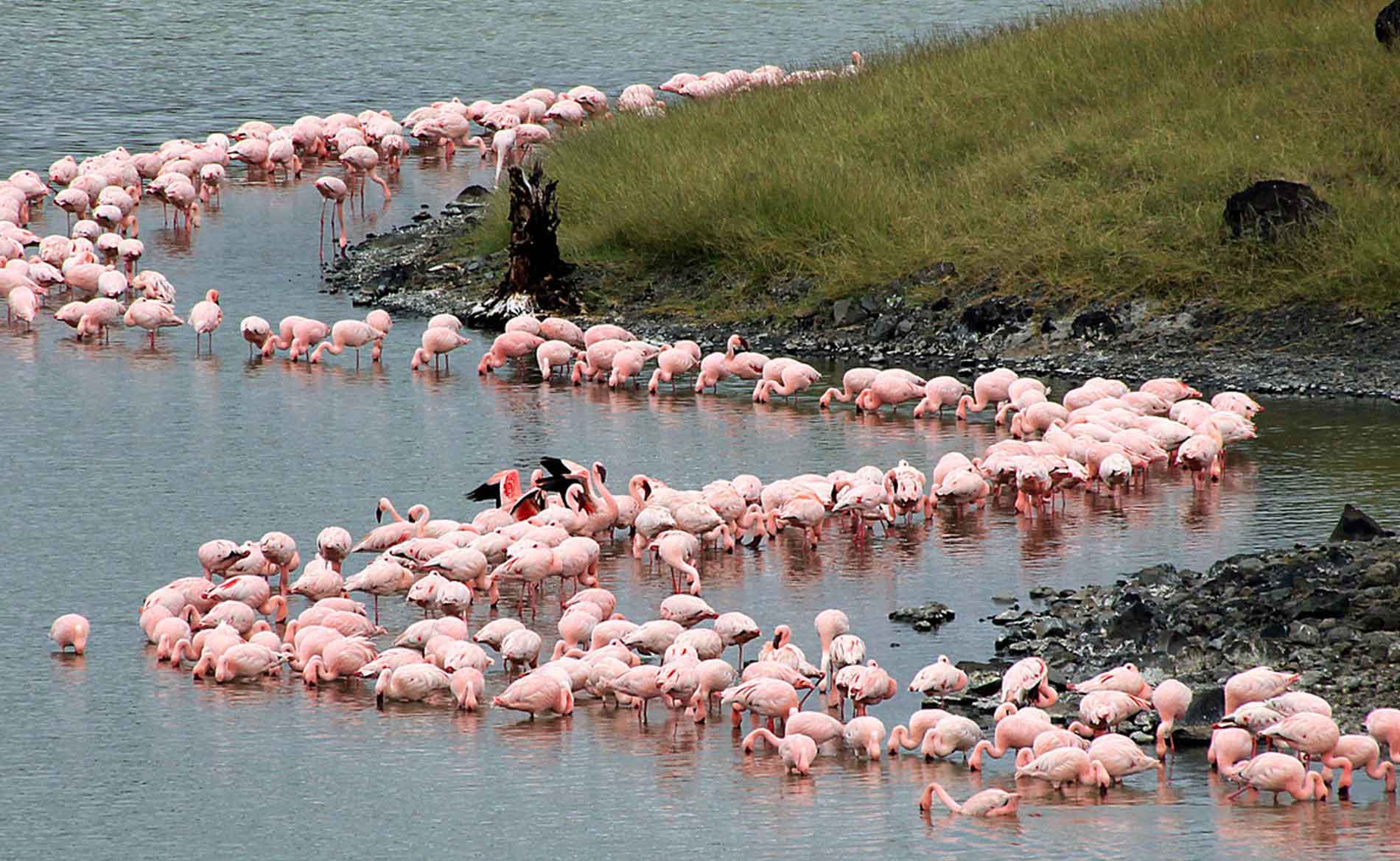
9. Expert Insights
Ecologists and conservationists who work in Arusha National Park emphasize the importance of preserving this unique area for future generations. They highlight the success of current conservation efforts, such as the restoration of habitats and the reduction of poaching, but also stress the need for continued vigilance and support from both local communities and international visitors. These experts often point to the park’s role as a critical refuge for species that are under threat elsewhere in Tanzania, making it an essential component of the country’s conservation strategy. Tourists who have visited Arusha National Park frequently describe their experiences as deeply rewarding, often noting the park’s peaceful atmosphere, stunning scenery, and the opportunity to see a wide variety of wildlife in a relatively short amount of time. Many visitors are also impressed by the park’s commitment to conservation and the efforts to involve local communities in these initiatives.
10. Future Prospects
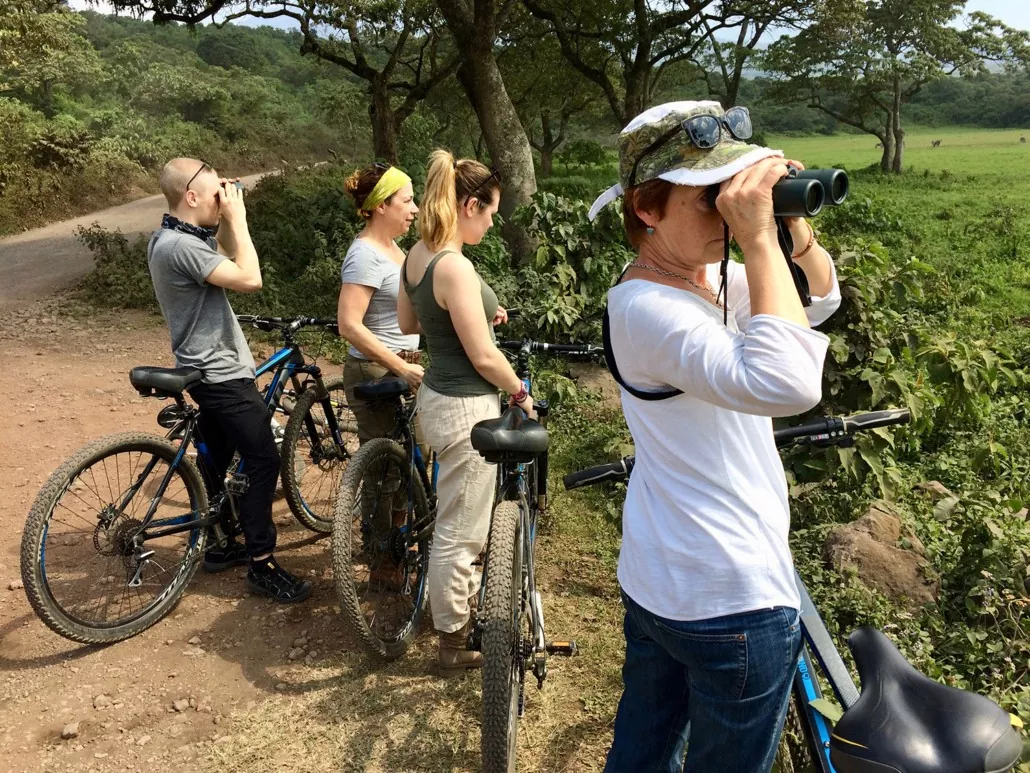
Looking to the future, Arusha National Park has several exciting conservation and development projects in the pipeline. These include plans to expand anti-poaching programs, enhance habitat restoration efforts, and increase community involvement in conservation activities. Additionally, there are initiatives aimed at improving the visitor experience, such as the development of new lodges and the upgrading of existing infrastructure to make the park more accessible and enjoyable for tourists.
One of the key challenges moving forward will be balancing the growth of tourism with the need to protect the park’s natural environment. As tourism continues to grow in Tanzania, there is a strong emphasis on sustainable practices that ensure the park remains a pristine and valuable natural sanctuary for future generations. The park’s management, in collaboration with local and international conservation organizations, is committed to maintaining the delicate balance between ecological preservation and tourism development. These future prospects not only aim to enhance the park’s appeal as a tourist destination but also reinforce its role as a cornerstone of Tanzania’s conservation efforts.
11. Conclusion
Arusha National Park, though smaller in size compared to other Tanzanian parks, offers an exceptional and diverse experience for visitors. Its varied landscapes, ranging from volcanic craters and dense forests to serene lakes and open savannas, provide a unique setting that supports a wide array of wildlife. Whether you are looking to embark on a thrilling climb up Mount Meru, enjoy a peaceful canoe ride on the Momella Lakes, or simply observe the park’s rich biodiversity on a game drive, Arusha National Park has something for every nature lover and adventure seeker.
Moreover, the park’s proximity to Arusha town makes it an accessible and convenient destination, allowing travelers to explore Tanzania’s natural beauty with ease. As you plan your visit, consider the different seasons and activities available to make the most of your time in the park. And remember, by visiting Arusha National Park, you are not only treating yourself to an unforgettable experience but also contributing to the vital conservation efforts that keep this unique ecosystem thriving.
In summary, Arusha National Park is a must-visit for anyone traveling to Tanzania. Its blend of stunning scenery, abundant wildlife, and a wide range of activities make it a perfect destination for both short trips and extended stays. Whether you are a first-time visitor to Africa or a seasoned explorer, Arusha National Park offers a rich and rewarding experience that you will cherish for years to come.
12. Frequently Asked Questions (FAQs)
12.1 How challenging is the climb up Mount Meru?
Climbing Mount Meru is a challenging yet rewarding experience. The trek typically takes 3-4 days, and while it is less strenuous than climbing Mount Kilimanjaro, it still requires a good level of fitness. The ascent involves steep sections, particularly near the summit, and climbers must be prepared for high altitudes. However, the stunning views of Mount Kilimanjaro and the diverse landscapes encountered along the way make the effort well worth it. Many climbers also use Mount Meru as a preparation climb for Kilimanjaro.
12.2 What wildlife can be seen on a typical game drive?
On a typical game drive in Arusha National Park, visitors can expect to see a variety of wildlife, including giraffes, zebras, buffaloes, and warthogs. The park is also home to several species of primates, including the black-and-white colobus monkey and blue monkeys. While large predators like lions are rare, leopards can sometimes be spotted in the forested areas. The park is also a haven for birdwatchers, with over 400 bird species recorded, including flamingos, crowned eagles, and various species of turacos and hornbills.
12.3 Is Arusha National Park suitable for family visits?
Yes, Arusha National Park is an excellent destination for family visits. The park’s diverse activities, such as game drives, walking safaris, and canoeing, cater to a wide range of interests and are suitable for all ages. The park’s smaller size and easy accessibility from Arusha town also make it a convenient option for families. Children will particularly enjoy the opportunity to see wildlife up close in a less crowded setting. Additionally, many of the lodges and accommodations around the park offer family-friendly facilities and services, ensuring a comfortable and enjoyable experience for visitors of all ages.
